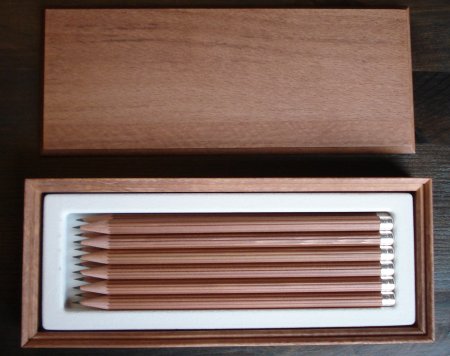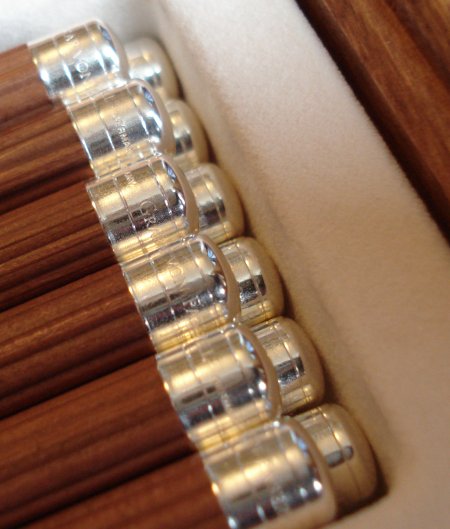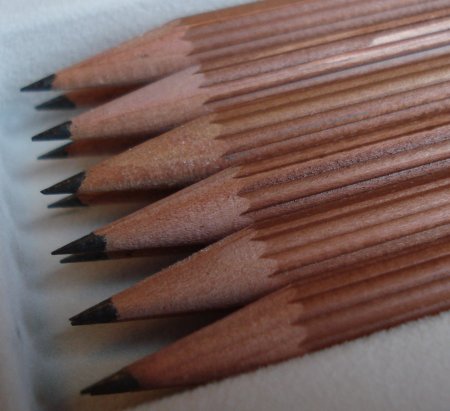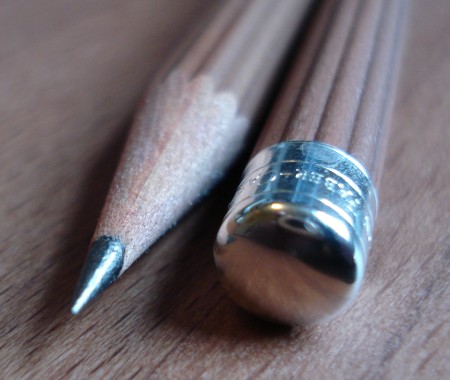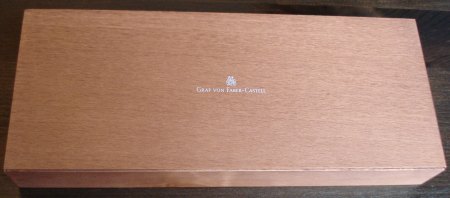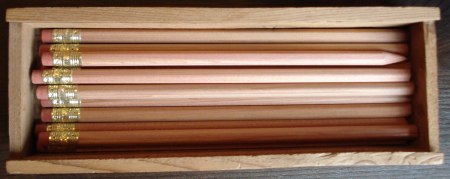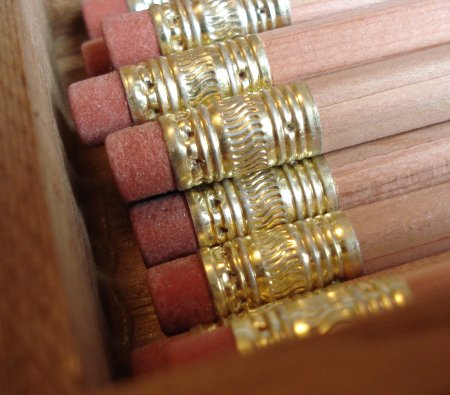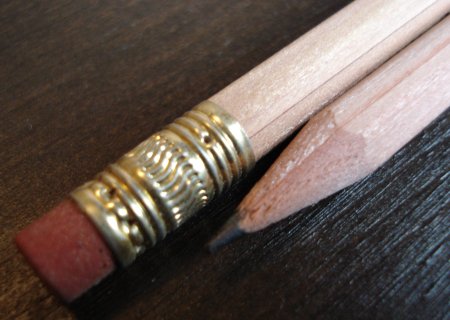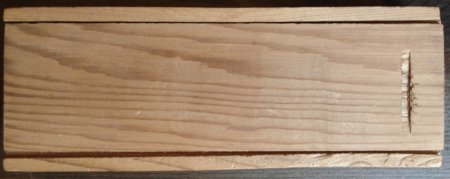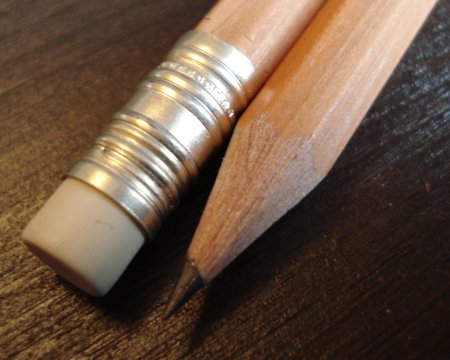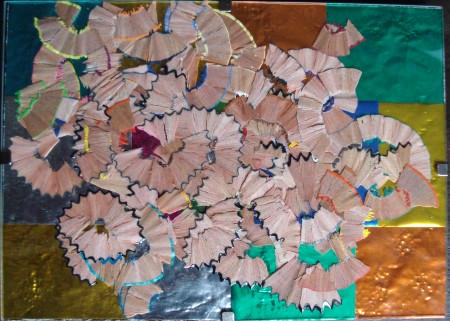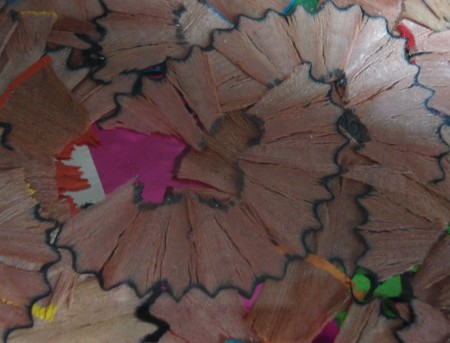Sorry for the delay since the last post. The entire editorial staff was under the weather this week.
Following up on the excellent contributed list of children’s books on pencils, we’re going to take a look at three adult-oriented books on pencils.
Marco Ferreri, Editor. Pencils. Mostre Georgetti, Milan, 1996.
Bill Henderson, Editor. Minutes of the Lead Pencil Club. Pushcart Press, Wainscott, NY, 1996.
Henry Petroski. The Pencil. Knopf, New York, 1992.
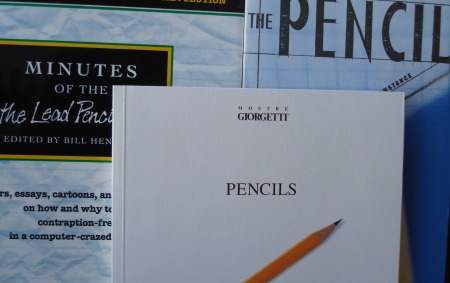
Pencils is a beautiful and inspiring tribute to the pencil.
Alessandro Ubertazzi writes in the introduction:
One of the reasons for the pencil’s appeal is a latent analogy with the human existence – it’s inevitable end. The pencil is used, it gets sharpened, consumed and disappears.
The volume is a catalogue of an exhibition that occurred in Milan in 1996/1997. It has not just beautiful prose, but stunning, amazing photographs of the pencils in the exhibit.
My favourite photo shows a set of 24 pencils, each made from a different wood. I would love to own this set of pencils!
Every category of pencil is given tribute as part of an exhibition that promoted the “minor arts”: note taking pencils, non-writing pencils, yellow office pencils, black pencils, pencils with rulers, pencils with names, Mussolini’s pencil, unfinished pencils, decorative pencils, advertising pencils, indelible pencils, working pencils, red/blue pencils, Marotte pencils, compass pencils, pencils with caps, mechanical pencils, precious metal pencils, 4-colour pencils, Mordan pencils, celluloid pencils, vulcanite pencils, mechanical pencils disguised as woodcase pencils, pencils that look like pens, aluminum pencils, and many others, all with beautiful photos.
The book mixes photographic tribute with contemplation of this everyday implement.
The ritual of sharpening is of paramount importance since it embodies the concept of regeneration. The point of the instrument becomes sharp once again, the wood dirtied by hands and time regains its natural colour and releases a vague but enticing smell of resin.
As essay in pictures, accompanied by words, Pencils is very adept at probing the fascination of these special bits of wood and graphite.
